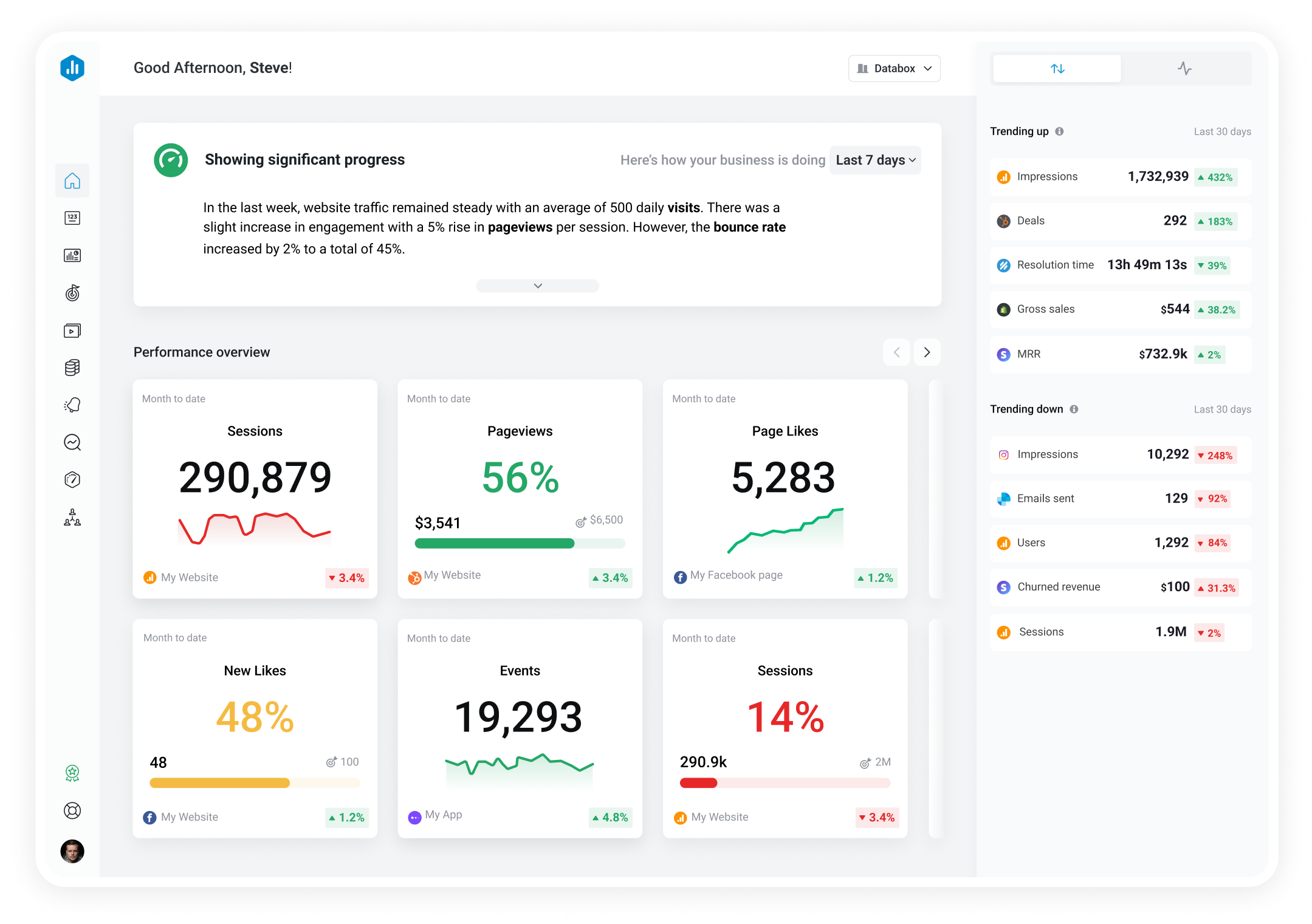Track all of your key business metrics from one screen
GET STARTED
 Stripe
Upgrades
Stripe
Upgrades Upgrades is a Stripe metric that measures the increase in revenue generated by customers who have upgraded to a higher pricing plan or subscription level.
With Databox you can track all your metrics from various data sources in one place.
Upgrades refer to the process of customers moving from one subscription tier to a higher or more advanced one, where they will gain access to additional features and functionality.
Upgrades are an essential metric for SaaS companies as they indicate the growth of customer accounts. They signify that customers see value in the product and are willing to invest more to gain greater benefits.
Tracking this metric is crucial for measuring expansion revenue, understanding customer behavior, and identifying opportunities for upselling.
To calculate upgrades, we need to divide the number of customers who upgraded their subscriptions by the total number of customers. This way, we can get the exact percentage.
Here’s the formula you can follow:
Upgrades = Number of customers who upgraded / Total number of customers
Let’s say you have a SaaS company with 500 customers. During a specific period, 50 customers upgraded their subscription plans.
Upgrades = 50 / 500
This leaves us with a 10% upgrade ratio.
A good upgrade ratio can vary depending on several factors, such as your target market, pricing model, and the specific stage of your SaaS business.
However, as a general guideline, a healthy upgrade ratio typically falls within the 10% to 30% range.
It’s important to note that a high upgrade ratio doesn’t necessarily mean it’s always better. Sometimes, a high ratio could indicate that you’re not initially capturing enough value in your lower-tier plans.
The best thing you can do is continuously monitor your historical data, track industry benchmarks, and evaluate your performance in relation to your specific business context to get a real sense of whether your numbers are good.
To increase the number of upgrades for your product, you need to come up with effective strategies that will encourage your customers to move to higher-tier plans.
This can include offering additional value, highlighting the benefits of advanced features, and providing a seamless upgrade experience.
But if you’re looking for something more specific, here are some of the strategies that leading industry experts use in their businesses:
More resources to help you improve:

Used to show a simple Metric or to draw attention to one key number.

Used to illustrate numerical proportions through the size of the slices.

Used to show comparisons between values.
Databox is a business analytics software that allows you to track and visualize your most important metrics from any data source in one centralized platform.
To track Upgrades using Databox, follow these steps:
 Goals
Goals Scorecards
Scorecards Metric Digest
Metric Digest Metric Builder
Metric Builder Data Calculations
Data Calculations Performance Screen
Performance ScreenThe Stripe SaaS MRR Growth dashboard tracks MRR, net new customers, churn rate, and revenue trends. It provides insights into MRR breakdowns (new, upgrade, churn MRR), helping SaaS businesses optimize subscription growth and retention.

This report is designed for SaaS leaders, providing in-depth analysis of MRR, customer churn, and revenue growth metrics. This dynamic overview integrates key performance indicators such as ARPU, LTV, customer retention, and MRR breakdowns.

Usage
Upgrades or downgrades are tracked when they actually happen. For example, if a user moved from PlanA ($59) to PlanB ($119) today, an upgrade of $60 will be tracked. The same logic will apply to downgrades.
In cases where the user would switch back and forth, every upgrade and downgrade would be tracked and would influence the upgrade or downgrade amount in Databox. Therefore, Databox suggests using the Calculated Metrics to track the Net New Upgrade or Downgrade values.
Below is an example of the MRR Upgrades metric and the same logic will apply for other Upgrades and Downgrades metrics.
Net New MRR Upgrades = MRR Upgrades – MRR Downgrades
Limitation
To calculate upgrades, downgrades, and reactivations we use the /events endpoint. In accordance with the Stripe API documentation, Databox can collect only 30 days of historical data through this API endpoint.
For example, if an upgrade occurred 31 days ago, it would not be pushed to and visible in Databox today.
